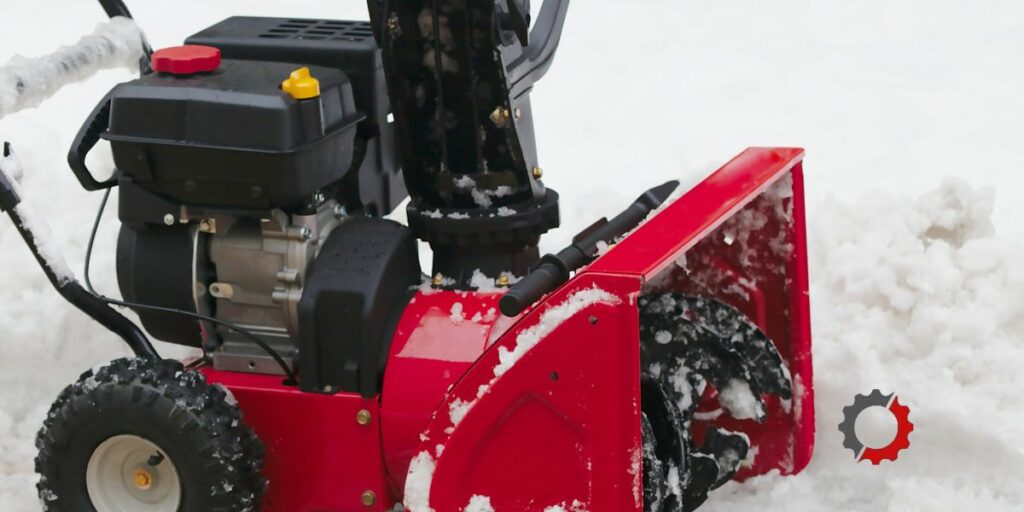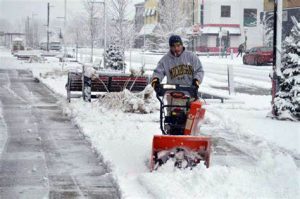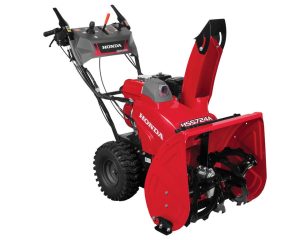Check These Eight Items If Your Snowblower Doesn’t Stay Running!
When the snowblower breaks down while you’re out in the cold trying to clear the driveway of snow before the next snowstorm arrives, it is frustrating. If you don’t get it operating soon, you’ll have to resort to using a manual snow shovel.
When the gas is out of date, the fuel line is blocked, the carburetor is dirty, the choke setting is off, the spark plug is dirty, the ignition coil is broken, the fuel cap is damaged, or there is too much oil in the crankcase, the snowblower won’t stay running.
Before making repairs, remove the spark plug wire. Observe any additional safety instructions provided in the operator’s manual.

Table of Contents
Why Your Snowblower Won’t Continue To Run
Bad or Old Gas in a Snowblower
The snowblower may start to run slowly and may eventually quit if gas has been sitting in the fuel system for a long time. This is due to the fact that gas starts to degrade as soon as 30 days after purchase.
Gasoline made from ethanol pulls moisture out of the atmosphere. It eventually leads to fuel system corrosion and leaves behind gooey deposits that obstruct fuel passage to the engine.
The article “This is the Type of Gas Snowblower Use” has further information on ethanol and the proper gas to use.
Use a fuel siphon pump to empty the fuel tank of your snowblower if you discover old fuel within. To stabilize the gas, lower moisture content, and clean the fuel system, combine a fuel additive like Sea Foam Motor Treatment.
Fill the gasoline tank with this mixture of petrol and Sea Foam. To ensure that the mixture enters the fuel system, turn on the snowblower and let it run for a while. It should get easier for the snowblower to operate.
If it doesn’t, go through this list again to look for other potential causes of your running issue.
Clogged Fuel Line in a Snowblower
Check for a fuel line obstruction. Deposits from old fuel may be left in the line, reducing fuel flow.
Stopping the flow of fuel with a fuel shut-off valve or fuel hose pinch-off pliers and crimping the line will allow you to inspect the fuel flow in the line. Next, take the hose end out of the fuel line’s segment that is farthest from the gasoline tank.
In a container that is lower than the fuel tank, insert the hose end. Without a fuel pump, the only direction the fuel will travel is downward. Restart the gasoline supply and observe the fuel flow into the container as it leaves the line.
If you are experiencing a good flow, stop the fuel flow and reconnect the gasoline line. Remove the fuel line portion from the snowblower if the flow is not satisfactory.
Spray carburetor cleaning into the line to dislodge the obstruction. To clear the clog, do this after using compressed air. Repeat as necessary until the gasoline line is clear of the obstruction.
If you can’t get the blockage out, reinstall the clean fuel line or get a new one. Install a replacement line if the fuel line is dry and cracked to prevent developing fuel leaks from this location in the near future.
Dirty Carburetor on a Snowblower
On a snowblower, a carburetor is utilized to control how much fuel and air are combined to create a combustion in the engine cylinder. A snowblower may cease running for lack of fuel when it is unable to operate effectively.
One component that is prone to contamination and malfunction as a result of the snowblower running on stale gas is the carburetor. The varnish that is left behind by this old gas can gum up the internal parts, choke the fuel jet, and cause the float to stick.
Your carburetor needs to be taken out of the snowblower and cleaned if this occurs. If you discover any broken components or the carburetor is in poor condition and cleaning is ineffective, you will need to rebuild it or replace it.
SOLUTION: Follow these simple procedures to establish if your running issue is caused by a dirty carburetor:
- Verify that the fuel is flowing properly to the carburetor.
- Spray some carburetor cleaner into the snowblower’s air inlet and start it up. Your carburetor is probably dirty if it runs smoothly while burning carburetor cleaner but then becomes slow or shuts off after the cleaner is burned.
- Continue cleaning and disassembling the carburetor.
Choke Set in the Wrong Position on a Snowblower
To help an engine get started while it is cold, the choke is necessary. To restrict airflow and allow more gas to enter the cylinder to start, the choke must be in the closed position.
Once the engine has warmed up, the choke must be moved to the open position, allowing more air to flow, to ensure that the engine maintains the proper gas-to-air ratio.
The engine will start to run slowly and eventually stop if the choke isn’t adjusted properly because the airflow is too low.
Verify that you are starting your snowblower according to the correct protocols. If you are uncertain, see the operator’s manual.
Dirty Spark Plug in a Snowblower
A snowblower may not start due to a fouled spark plug. The plug may stop sparking and cause sporadic running issues when it gets filthy and covered in carbon or oil.
WORKAROUND: Take out the spark plug to inspect it. The spark plug has to be replaced if it is very black in color, has shattered porcelain, or has an electrode that has burned.
You can use a tip that is only minimally dusty and generally in good shape, but you must clean it with a wire brush to get rid of any carbon and dirt accumulation.
Make sure the spark plug gap is set according to the recommendations of the engine manufacturer. Your operator’s manual contains this information.
Your snowblower may also experience operating issues if the spark plug is improperly gapped or if the spark plug wire is not tightly fastened.
If the spark problem persists after you’ve made sure your spark plug is in good condition or has been replaced, check your ignition coil.
Bad Ignition Coil on a Snowblower
Verify your spark plug is in good shape, is gapped correctly, and has a securely attached wire before looking for an ignition coil issue.
The snowblower’s ignition coil may be to blame for its unreliability. When the snowblower becomes hot, the ignition coil’s windings may separate and short out.
As a result, the spark plug won’t be able to produce a spark since it can’t obtain the necessary voltage.
WORKAROUND: Use an ohmmeter to check for continuity breaks. Invalidate the ignition coil.
The Crankcase Of The Snowblower Has Too Much Oil
Your snowblower’s engine may smoke, perform poorly, and eventually quit if it has too much engine oil in it. A hydrolocked engine is one that has too much engine oil that has reached the spark plug and entered the cylinder.
The solution is to make sure the crankcase oil level isn’t too high when operating a snowblower with a 4-cycle engine. If so, take out a little oil until it reaches the maximum level advised by the manufacturer.
The gas-to-oil ratio on a 2-cycle snowblower must be in accordance with the manufacturer’s specifications. The overuse of oil in the gas-to-oil mixture must be stopped. Drain the fuel and replace it with the proper ratio of gas to oil.
Bad Snowblower Fuel Cap
A vent in the gas cap of a snowblower allows air to enter past the cap. This makes it possible for the air pressure inside the tank to match the air pressure outside.
The fuel tank will create a vacuum if the vent in the cap gets blocked. Gas won’t be able to escape the tank through the gasoline lines because to this vacuum.
As a result, the snowblower will stop working since the engine won’t have enough fuel.
Remove the gasoline cap and try to start the snowblower after it has stopped working and won’t start. You might have an issue with the fuel cap vent if it starts and runs without a hitch.
Reinstall the fuel tank cap while allowing your snowblower to keep running to see if the snowblower shuts off after running for a time. This will give you more assurance.
Whether it does and still won’t start, see if the fuel cap needs to be loosened.
FIX: Install a new fuel cap in place of the damaged one on the snowblower.






